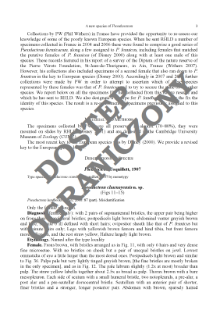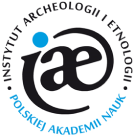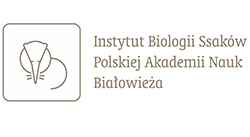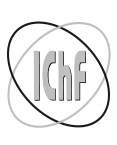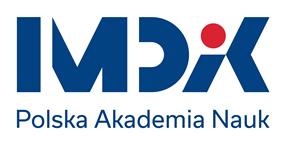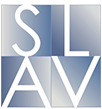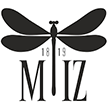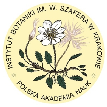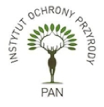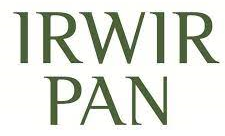
Object
Title: A review of the mite family Stigmocheylidae Berlese (Acari: Prostigmata)
Subtitle:
Annales Zoologici, vol. 58, no 2 ; Review of Stigmocheylidae
Contributor:
Muzeum i Instytut Zoologii Polskiej Akademii Nauk
Publisher:
Place of publishing:
Description:
Bibliogr. p. 315-316 ; P. 311-325 : ill. ; 27 cm ; Taxa in Latin
Type of object:
Abstract:
The external morphology of rare soil inhabiting mites belonging to the monobasic family Stigmocheylidae (Acari: Prostigmata) is examined, based on the material from North America. Homologies of all studied morphological structures with those ofother prostigmatic mites are established. An expanded taxonomic diagnosis of the family isprovided for the first time. Two new species from North America are described, Stigmocheylus americanus sp. nov. and S. oberon sp. nov. These species differ from S. brevisetusBerlese, 1910, the type species of the genus, by the longer body 510 and 630 μm,respectively (vs. 380 in S. brevisetus) and by the absence of setae c3. Stigmocheylusoberon sp. nov. differs from S. americanus sp. nov. by the absence of g2 (vs. its presencein S. americanus), and by leg setation: setae ve’ and ve” on tarsi II–III; v’ on tibia IV, l1,l”1, v’1 on genu I, l” on telofemur III, l’ on telofemur IV, l” on basifemur I, d on basifemurII, and 4c on coxa IV are present (vs. absence of these setae in S. americanus sp. nov.). All three species differ from S. pilosus (Soliman et Zaher, 1975), the second formerly known species of this family, by having the non segmented peritremes.
Relation:
Volume:
Issue:
Start page:
End page:
Detailed Resource Type:
Format:
Resource Identifier:
Source:
MiIZ PAN, call no. P.255, vol 58, no 2 ; MiIZ PAN, call no. P.4314, vol 58, no 2 ; click here to follow the link
Language:
Language of abstract:
Rights:
Rights Reserved - Restricted Access
Terms of use:
Digitizing institution:
Museum and Institute of Zoology of the Polish Academy of Sciences
Original in:
Library of the Museum and Institute of Zoology of the Polish Academy of Sciences
Projects co-financed by:
Programme Innovative Economy, 2010-2014, Priority Axis 2. R&D infrastructure ; European Union. European Regional Development Fund
Access:
Object collections:
- Digital Repository of Scientific Institutes > Partners' collections > Museum and Institute of Zoology PAS > Scientific Journals
- Digital Repository of Scientific Institutes > Partners' collections > Museum and Institute of Zoology PAS > MIZ PAN Publications > Annales Zoologici
- Digital Repository of Scientific Institutes > Literature > Journals/Articles
Last modified:
Oct 2, 2020
In our library since:
May 6, 2016
Number of object content downloads / hits:
38
All available object's versions:
https://rcin.org.pl/publication/55690
Show description in RDF format:
Show description in RDFa format:
Show description in OAI-PMH format:
| Edition name | Date |
|---|---|
| Review of the mite family Stigmocheylidae Berlese (Acari: Prostigmata) / Bočkov, Andrej V. | Oct 2, 2020 |
Objects Similar
Kaczmarek, Sławomir
Dabert, Jacek Natress, Barry Dabert, Mirosława
Niedbała, Wojciech
Dong, Hui Yang, Ding Hayashi, Toshihiko
Kisielewski, Jacek
Philips, T. Keith
Flores, Gustavo E. Chani-Posse, Mariana
Lozan, Aurel Tobias, Vladimir Ivanovič

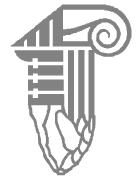 INSTYTUT ARCHEOLOGII I ETNOLOGII POLSKIEJ AKADEMII NAUK
INSTYTUT ARCHEOLOGII I ETNOLOGII POLSKIEJ AKADEMII NAUK
 INSTYTUT BADAŃ LITERACKICH POLSKIEJ AKADEMII NAUK
INSTYTUT BADAŃ LITERACKICH POLSKIEJ AKADEMII NAUK
 INSTYTUT BADAWCZY LEŚNICTWA
INSTYTUT BADAWCZY LEŚNICTWA
 INSTYTUT BIOLOGII DOŚWIADCZALNEJ IM. MARCELEGO NENCKIEGO POLSKIEJ AKADEMII NAUK
INSTYTUT BIOLOGII DOŚWIADCZALNEJ IM. MARCELEGO NENCKIEGO POLSKIEJ AKADEMII NAUK
 INSTYTUT BIOLOGII SSAKÓW POLSKIEJ AKADEMII NAUK
INSTYTUT BIOLOGII SSAKÓW POLSKIEJ AKADEMII NAUK
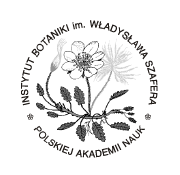 INSTYTUT CHEMII FIZYCZNEJ PAN
INSTYTUT CHEMII FIZYCZNEJ PAN
 INSTYTUT CHEMII ORGANICZNEJ PAN
INSTYTUT CHEMII ORGANICZNEJ PAN
 INSTYTUT FILOZOFII I SOCJOLOGII PAN
INSTYTUT FILOZOFII I SOCJOLOGII PAN
 INSTYTUT GEOGRAFII I PRZESTRZENNEGO ZAGOSPODAROWANIA PAN
INSTYTUT GEOGRAFII I PRZESTRZENNEGO ZAGOSPODAROWANIA PAN
 INSTYTUT HISTORII im. TADEUSZA MANTEUFFLA POLSKIEJ AKADEMII NAUK
INSTYTUT HISTORII im. TADEUSZA MANTEUFFLA POLSKIEJ AKADEMII NAUK
 INSTYTUT JĘZYKA POLSKIEGO POLSKIEJ AKADEMII NAUK
INSTYTUT JĘZYKA POLSKIEGO POLSKIEJ AKADEMII NAUK
 INSTYTUT MATEMATYCZNY PAN
INSTYTUT MATEMATYCZNY PAN
 INSTYTUT MEDYCYNY DOŚWIADCZALNEJ I KLINICZNEJ IM.MIROSŁAWA MOSSAKOWSKIEGO POLSKIEJ AKADEMII NAUK
INSTYTUT MEDYCYNY DOŚWIADCZALNEJ I KLINICZNEJ IM.MIROSŁAWA MOSSAKOWSKIEGO POLSKIEJ AKADEMII NAUK
 INSTYTUT PODSTAWOWYCH PROBLEMÓW TECHNIKI PAN
INSTYTUT PODSTAWOWYCH PROBLEMÓW TECHNIKI PAN
 INSTYTUT SLAWISTYKI PAN
INSTYTUT SLAWISTYKI PAN
 SIEĆ BADAWCZA ŁUKASIEWICZ - INSTYTUT TECHNOLOGII MATERIAŁÓW ELEKTRONICZNYCH
SIEĆ BADAWCZA ŁUKASIEWICZ - INSTYTUT TECHNOLOGII MATERIAŁÓW ELEKTRONICZNYCH
 MUZEUM I INSTYTUT ZOOLOGII POLSKIEJ AKADEMII NAUK
MUZEUM I INSTYTUT ZOOLOGII POLSKIEJ AKADEMII NAUK
 INSTYTUT BADAŃ SYSTEMOWYCH PAN
INSTYTUT BADAŃ SYSTEMOWYCH PAN
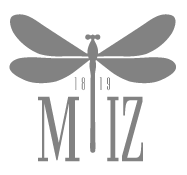 INSTYTUT BOTANIKI IM. WŁADYSŁAWA SZAFERA POLSKIEJ AKADEMII NAUK
INSTYTUT BOTANIKI IM. WŁADYSŁAWA SZAFERA POLSKIEJ AKADEMII NAUK
